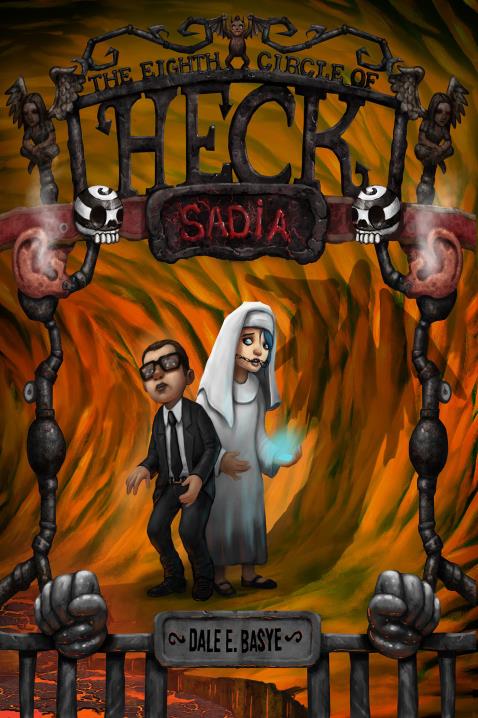Part Two: Reaching Auditory Learners

A reluctant writer comes in many guises: a student who is good at telling stories but lacks the skill (or desire) to put them down on paper; someone who is never satisfied with what they write; a poor speller; someone who thinks that writing is just grammar and rules; someone who abandons their writing easily; or someone who is simply scared to push themselves or risk appearing foolish.
A simple strategy is to not make writing seem like writing to the reluctant writer. Not tricking them, per se, but cleverly building up necessary skills to help make writing more productive and satisfying.
Now You’re Talking (and Writing)
Some children are auditory learners. You know: the ones that you are constantly hushing (it’s odd: we spend so much time trying to get children walking and talking as babies only to force them sit down and be quiet when older!). In any case, many of these “chatty” students simply must process thoughts through their lips.
In terms of writing, verbal learners might prefer talking another student through their story before committing pen to paper: verbally formulating their plot and solidifying characters. This helps young writers put thoughts in order beforehand to better avoid writing frustration.
Auditory learners have the tendency to read out loud, repeat information and ask a variety of questions for clarification. They understand the world by talking about it, tend to like music, would rather listen to and talk about a story than read, and demonstrate good oral spelling.
All Ears
Auditory learners remember what they hear and tend to process by talking aloud. They are the vocal students who hum, tap their pencils to a beat, or can’t go throughout the day without singing or sharing a story. These students can often have a hard time concentrating in a noisy environment.
Headphones can act like mufflers for students who are easily distracted by sounds and side-conversations. Non-intrusive music can also be used to set a “mood” in the learning environment. This can help students better focus on the task at hand. Long periods of silence when reading, writing, or testing can be difficult for auditory learners. Classical music can help calm students during an exam, while upbeat music might prove motivational during certain lessons or exercises.
These students thrive in group discussions and read aloud activities. They often need to read out loud, ask questions, or talk through problems they are having with their work
Persuasive writing exercises can be engage auditory learners by getting children together in groups to form and present persuasive arguments. These types of learners often make strong debaters, so enabling students to build persuasive arguments can be an emboldening experience. Students can begin by determining a goal, then identifying reasons to support that argument then finding facts or examples to validate each reason. Persuasive lessons help students discover the power of writing to serve their needs. When they recognize what writing can “do for them,” they are motivated to write and to work at making their arguments clearer and more persuasive.
Set the Stage for Collaboration
Sometimes students simply work better together. Pairing children or putting them in small groups for a set amount of time should help keep them focused (though be prepared for some noise!). Pairing up students to help them brainstorm their stories can ignite creativity on its own, with each child helping one another to fill in gaps or take their ideas in exciting new directions. Students can even “role-play” their characters and situations! Partners can write and switch too—building their stories line by line—or one person can transcribe what the other dictates and then switch, turning an evolving conversation into an actual story. Their stories don’t even need to be formally committed to paper and could, for example, be recorded as a podcast. Listening back to their podcasts and either honing their stories verbally or through the act of writing can kick-start healthy writing habits.
Children don’t even need to be in the same room when brainstorming stories. Online collaboration tools such as Padlet can help with collaborative ideation. Padlet works like an online sheet of paper where students can put any content (e.g. images, videos, documents, text) anywhere on the page, together with anyone, from any device.
Correcting a peer’s writing (or a teacher’s, for that matter) is also far less painful than correcting your own. This helps a reluctant writer learn how to revise and correct without it feeling too personal.
Make It a Habit
Making writing a fun and frustration-free part of a student’s daily life is important. Timed free-writing exercises—no more than ten or 15 minutes at a time—help to ingrain good practices. Ideally, students will begin to consider this “their special time” to reflect, let their imaginations run rampant, vent frustrations, or capture life-moments. It’s also important to let students write about what engages them the most before nudging them into specific directions. If they are passionate about a topic, this passion will ultimately come through in their writing. This could even take the form of “fan fiction”: where students continue the adventures of beloved characters from books or movies.
Setting up a class blog, with teacher-penned prompts (such as quotes, snippets of dialogue, or even photographs), can also prove successful. Be sure to promote short bursts of productive writing: save the editing and spelling for later. The worst thing for writing flow is to have issues such as spelling and grammar impede that initial gush of creativity.
Again, for the verbal learner, this could be simply recording their thoughts for a designated period of time, and making use of those ideas later when writing. Students can capture ideas—either alone or with collaborators—while on walks by dictating into their phones. It’s a great opportunity for students to talk their stories out while releasing restless energy! Even recording recollections of dreams can be a powerful way of building vocabulary.
And, since reluctant writers are often reluctant readers, have students make reading a part of their daily routine. This could even be listening to audio books or magazine podcasts on an iPod: anything to fill a young writer’s head with well-chosen words.
Peer Pressure
Students are often more inclined to step-up and brave that blank page if they know that their writing will be shared with peers. Hold a reading at a local coffee shop for student work, or simply a weekly “open mic” in the classroom where students read what they have written that week. Student stories can also be published in a book, blog or eBook. Be sure to teach “tactful” commenting and critique. Even those who are shy to share will likely be inspired by those who aren’t.
Resistance is Futile (and Fuel)
Even resistance can be used as writing fuel. If a student doesn’t want to write and, instead, would prefer to play outside, let them write about what they’d do outside. If they want to scream and throw a tantrum, have them write about that. Let them write about how much they hate writing until they have run out of words. This will reinforce that all-important pipeline between brain and fingers.
The Write Tools
There are a number of online tools to help get auditory learners writing.
ReadWriteThink is a handy online resource that provides educators, parents, and afterschool professionals with free, high-quality reading and language arts instruction materials.
Another way to help students organize and arrange stories is through Adobe Spark Video. This free tool allows students to quickly create animated videos featuring their own narration. Not only do the app’s prompts help children with story structure, but Adobe Spark Video can also be an empowering tool for students who are uneasy with giving formal presentations to their peers.
Other tools include: PodOmatic, where auditory learners can create, find and share podcasts; Playlist, a resource for auditory learners to access free music to play in the background while they learn; Natural Reader, a way to read text stored on your computer; Audacity, easy-to-use audio editing software; Librivox, providing free access to nearly 1,500 free audio books recorded by Librivox volunteers; Project Gutenberg, a collection of human-read and computer-generated audio books; Lit2Go, a collection of free stories and poems in mp3 format; and Read With Me, a student literacy and reading tool for grades K-2 (and their teachers).
With these and other writing tricks and tips, reluctant writers will eventually overcome feelings of past failure and begin to develop the skills crucial to strong writing: building confidence, pride and perseverance!



 “A work of great imagination, featuring wonderful characters, an exciting setting, and a plot woven to a thrilling finish.”
“A work of great imagination, featuring wonderful characters, an exciting setting, and a plot woven to a thrilling finish.” We are the stories we tell. And we always have been, ever since we first started grunting our tales of the day’s hunt to one another around the campfire. But stories that once started as conversations and cave paintings have evolved into Snapchats and interactive videos.
We are the stories we tell. And we always have been, ever since we first started grunting our tales of the day’s hunt to one another around the campfire. But stories that once started as conversations and cave paintings have evolved into Snapchats and interactive videos.
 At long last, the next chapter in the mildly diverting Circles of Heck series is finally here! Yes, Sadia: The Eighth Circle of Heck is now ready for ocular consumption. Buy it NOW, HERE!
At long last, the next chapter in the mildly diverting Circles of Heck series is finally here! Yes, Sadia: The Eighth Circle of Heck is now ready for ocular consumption. Buy it NOW, HERE! So what is real? What is a lie, and what’s merely a joke? Is a fact, in fact, a fact? These days, it’s hard to tell.
So what is real? What is a lie, and what’s merely a joke? Is a fact, in fact, a fact? These days, it’s hard to tell.


